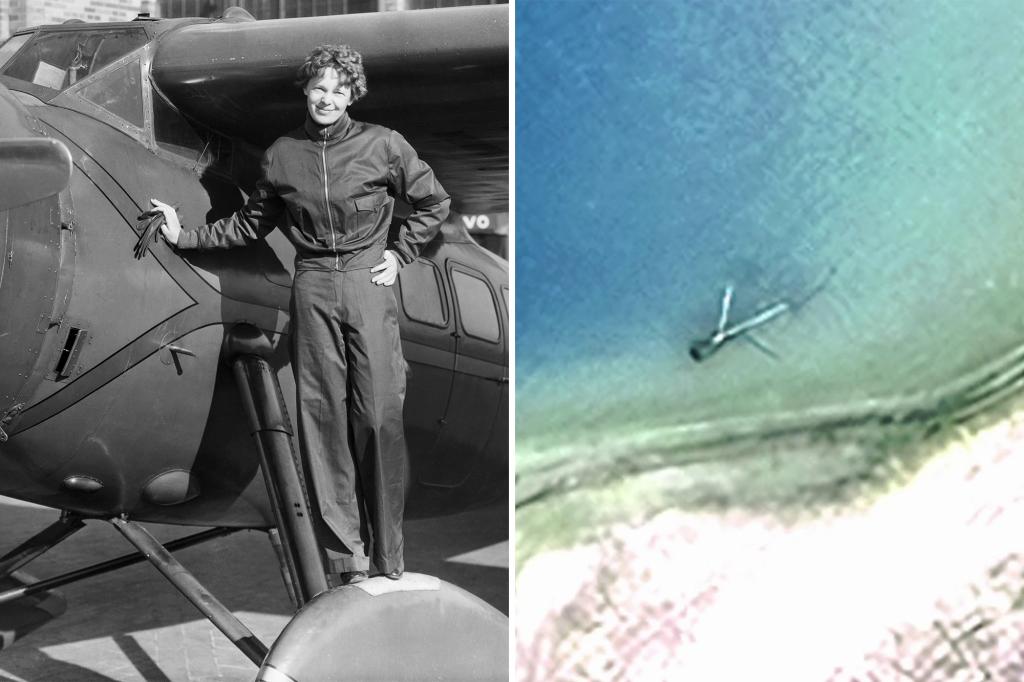Purdue University researchers are sending a new expedition team to find Amelia Earhart’s missing plane based on evidence that it may have crashed in a remote island in the South Pacific.
The University, which had employed the iconic aviator and helped fund her historic flight 88 years ago, announced Wednesday it will team up with the Archaeological Legacy Institute (ALI) to send researchers to the Nikumaroro island in November to investigate the mysterious “Taraia Object.”
The object was first flagged in satellite photos following an intense tropical cyclone in 2015, with ALI believing it is the main body of Earhart’s Lockheed 10-E Electra, which disappeared on July 2, 1937, during her ill-fated attempt to fly around the world.
“What we have here is maybe the greatest opportunity ever to finally close the case,” ALI executive director Richard Pettigrew said in a statement.
“With such a great amount of very strong evidence, we feel we have no choice but to move forward and hopefully return with proof,” he added. “I look forward to collaborating with Purdue Research Foundation in writing the final chapter in Amelia Earhart’s remarkable life story.”
Nikumaroro lies between Hawaii and Fiji near the center of the Pacific Ocean, Pettigrew has believed for years that the island hides the secret to Earhart’s disappearance.
Despite previous trips to the island, with turned up human remains in 2017, there is still no conclusive evidence that Earhart had landed there, and the Taraia Object has yet to be located since the shifting sands caused it to vanish.
Purdue, however, said it is committed to the search, which will embark from the Marshall Islands on Nov. 5 and allow researchers to spend five days on Nikumaroro to search for clues.
If the initial expedition proves successful, the university said a larger excavation effort will be put in motion to retrieve the remains of the plane next year.
“Purdue Research Foundation began its commitment to Earhart’s aeronautical explorations in 1935,” Purdue Research Foundation CEO Chad Pittman said.
“By embarking on this joint partnership with ALI, we hope to come full circle on our support of Earhart’s innovative spirit, solve one of history’s biggest mysteries, and inspire future generations of aviators, adventurers, innovators and Boilermakers.”
Earhart, the first woman to fly over the Atlantic in a solo trip, began working at Purdue in 1935 as a career counselor for women and an adviser to its aeronautical engineering department.
Then-University President Edward Elliott invited the aviator to the school to inspire female students to complete their educations and pursue careers, just as Earhart had done.
Earhart remained with the school until her 1937 disappearance aboard the Electra, along with navigator Fred Noonan.
The pair had set off from Lae, Papua New Guinea, with plans to refuel on Howland Island before continuing their journey to Honolulu and their final destination of Oakland, Calif, but faced a strong headwind in Lae when Earhart’s radio transmissions eventually went silent.
The US Navy and Coast Guard conducted a 16-day search for the missing duo without success, and Earhart was officially declared dead on Jan. 5, 1939.
Read the full article here

